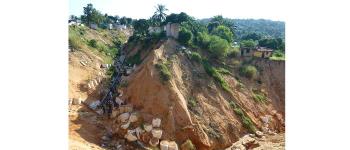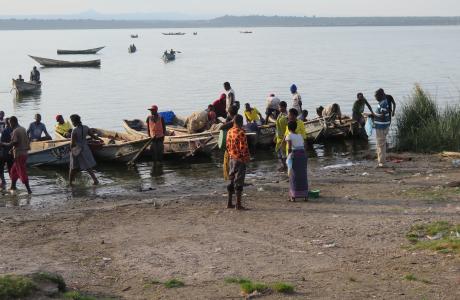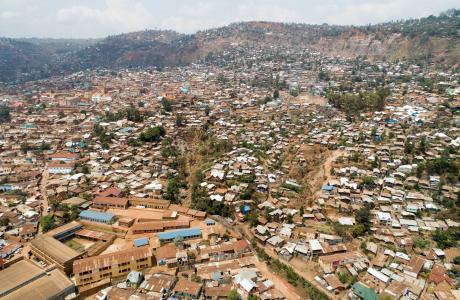Gully erosion puts millions of urban residents in Congo in danger
In the fast-growing cities of the Democratic Republic of the Congo, heavy rainfall creates thousands of large gullies. Houses are swallowed by these deep erosion channels, causing an estimated 12,000 Congolese to lose their home each year. New research, led by KU Leuven and the Université Officielle de Bukavu, quantified this underestimated phenomenon, advocates for more awareness, and calls for better urban planning and infrastructure. The research results were published in Nature.

Gullies are large, deep channels caused by rain water forcing its way through the soil with great power, eroding the earth. In urban areas, they are a major problem and can cause houses, roads, and infrastructure to be washed away. The consequences can be disastrous, as became apparent during the heavy rainfall in Kinshasa in December 2022, when urban gullies led to the loss of dozens of lives.
‘Nevertheless, the problem stays under the radar and cities keep expanding to areas that are vulnerable to erosion,’ says Professor Matthias Vanmaercke from the KU Leuven Department of Earth and Environmental Sciences. ‘With our research, we want to highlight the risks connected to this growing problem, and advocate for more preventative measures like better urban planning and infrastructure. We also want to see these erosion gullies included in international disaster risk reduction plans.’
3.2 million people live in areas at risk
The team of Congolese and Belgian researchers identified a total of 2,922 urban gullies in 26 Congolese cities. These urban gullies were created by a combination of heavy rainfall, ill-considered urbanisation, and poor infrastructure. With the help of satellite images and population data, they calculated that these gullies forced an estimated 118,600 people to abandon their homes between 2004 and 2023. Since 2020, this trend has accelerated to an average of 12,200 people losing their homes each year.
Further analysis allowed the team to map the main areas at risk. For the first time, a systematic representation has been made of the scope and the distribution of this kind of gully erosion in an entire country.
‘Our study is the first to indicate that these gullies are not just isolated incidents. They are a structural and rapidly growing problem,’ says Professor Vanmaercke. ‘Even just in Congo, 3.2 million people live in areas at risk. These numbers are similar to the number of people at risk of being affected by landslides or floods. Nevertheless, this is a different kind of danger that is often overlooked.’
An underestimated and growing problem
‘The risks and consequences will most likely only keep increasing in response to urbanisation and climate change,’ notes Professor Vanmaercke. Many other countries in the Global South have been struck by this issue. The gullies usually form in poor urban areas on steep slopes with sandy soils. Uncontrolled rainwater run-off, caused by inadequate urban planning and water management, sets the erosion in motion. In many cases, the gullies continue expanding year after year and keep displacing local inhabitants.
‘Once they have formed, these gullies can keep growing for decades if not addressed,’ says Professor Vanmaercke. ‘For the local population, they form a daily problem and a risk. Nevertheless, they are very rarely recognised as disasters or taken into consideration in policies for disaster risk reduction, which gives particular cause for concern.’
The study ‘Mapping urban gullies in the Democratic Republic of the Congo’ by Ilombe Mawe et al. was published in Natureand was funded by ARES-PRD project PREMITURG, the DGD programme of the Royal Museum for Central Africa, and FWO.
The research team consisted of researchers from KU Leuven, Université Officielle de Bukavu, the Royal Museum for Central Africa, Université de Kinshasa, ULiège, Geological and Mining Research Center Kinshasa, Université Catholique de Louvain, and Maria-Curie Sklodowka University Lublin.
For more information, please contact:
Professeur Matthias Vanmaercke, Department of Earth and Environmental Sciences
matthias.vanmaercke@kuleuven.be, +32 16 37 21 67, +32 476 716 164
Dr. Olivier Dewitte, Natural Hazards Unit, Department of Earth Sciences, AfricaMuseum
olivier.dewitte@africamuseum.be, +32 2 769 54 52


